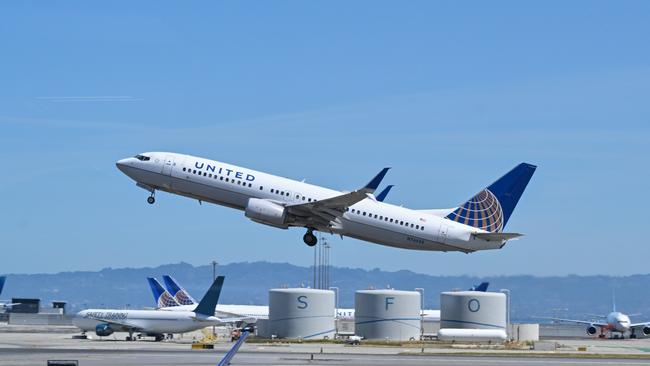More airline seats and cheaper fuel fail aren’t bringing down international airfares
Hopes of international airfares becoming more affordable have been dashed by data showing they are getting more expensive.
Business
Don't miss out on the headlines from Business. Followed categories will be added to My News.
International airfares are continuing to climb despite more airline capacity coming into the Australian market and oil prices falling.
Data from Flight Centre and Webjet shows airfares to Europe, Asia and North America are all above what they were a year ago, and have even increased since the start of the year.
Webjet data across 14 popular routes shows all but one cost more in the first half of 2023 than in the same period last year.
Travellers flying the return trip between Adelaide and Bali were paying 32.5 per cent more, and Perth-Singapore return was 26.5 per cent dearer.
Double-digit fare increases were recorded on the Sydney-Los Angeles, Melbourne-Vancouver, Melbourne-Singapore and Brisbane-Singapore routes while Sydney-London was up 13 per cent.
Flight Centre global product general manager Jason Hartley said the company was starting to see more sale fares, which was promising, but it did not apply to many seats.
“The average fare, we think, is not coming down and that’s based on our mix of sales month to month. We’ve seen them go up since January,” Mr Hartley said.
“What is going down are sale fares but they don’t apply to a huge number of seats.
“On the upside, that sale activity is a good indication that airlines are starting to see the need to stimulate the market with better prices but our overall impression is that the average (fare) isn’t coming down just yet.”
In the North American market, Mr Hartley said prices declined from May to June from $2600 to $2500 but were still higher than in January when fares averaged $2300.
“If I look at Asia – still seeing increases, and Europe is still going up,” he said.
The cost of premium cabin seats were still exorbitantly high at about $15,000 return for business class on the Sydney-Los Angeles route in December, $11,500 return for Melbourne-Vancouver and $12,000 return for Perth-London.
Mr Hartley said there were simply not enough premium seats to meet the current demand with leisure and business travellers “competing” for a more comfortable ride.

“By the time we get closer to the coming December, we’ll probably see some reductions but not as much as people are hoping for, because it’s still high relative to pre-Covid and you’ve got cost of living pressures as well for households particularly families travelling,” he said.
“Family travel hasn’t bounced back for us like the other categories and I think that’s because of the cost to take three, four or five people away.”
Airline executives, such as Qantas chief executive Alan Joyce, have previously suggested fares would moderate as capacity returned and oil prices fell.
But even with airline seat numbers increasing, and the price of oil half of what it was last June, fares rose.
“Fares are certainly not showing any sign of falling,” said The Don’t Forget Travel Group director Andrew Sullivan.
“I just had a look at fares to Europe and it was $4500 for economy.”
In January, there were 3.4 million airline seats available in and out of Australia compared with under two million in June 2022.
Further capacity is on the way. Qantas plans a big boost to international flights from late October and Vietjet is upping services from 20 a week to 34 from December.
China Eastern is reinstating routes to Wuhan and Nanjing from Sydney later this month and Turkish Airlines is expected to announce its plans to fly to Australia within weeks.
Mr Sullivan said October could see the return of airline “earlybird” sales giving travellers the chance to pick up cheaper fares for the northern summer.
“That will be the key to next year’s flights,” he said.
Originally published as More airline seats and cheaper fuel fail aren’t bringing down international airfares



